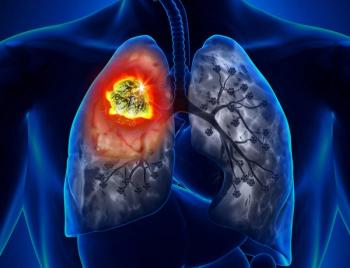
Oncology NEWS International
- Oncology NEWS International Vol 12 No 1
- Volume 12
- Issue 1
States With High Lung Ca Rates Spend Less on Control
WASHINGTON-The failure of most states to put the money they receive from the Master Settlement Agreement with the tobacco industry into tobacco-control programs will increase their future health care costs for lung cancer and other tobacco-related illnesses, according to two nonprofit health groups. An independent analysis of data published in October 2002 found that states with the highest incidence of lung cancer generally spent the least amount of money for tobacco control.
WASHINGTONThe failure of most states to put the money they receive from the Master Settlement Agreement with the tobacco industry into tobacco-control programs will increase their future health care costs for lung cancer and other tobacco-related illnesses, according to two nonprofit health groups. An independent analysis of data published in October 2002 found that states with the highest incidence of lung cancer generally spent the least amount of money for tobacco control.
The finding emerged from an analysis prepared by It’s Time to Focus on Lung Cancer, a joint advocacy campaign of Cancer Care, Inc., and the CHEST Foundation. "We found that the 10 states with the highest rates of lung cancer among men averaged $1.93 per capita for tobacco control," said Diane Blum, executive director, Cancer Care. "For women, the average spending was $2.67."
The Centers for Disease Control and Prevention (CDC) has published guidelines for how much each state should spend per resident on tobacco control. The recommended amountswhich were determined using several criteria that included a state’s smoking incidence, its costs accrued from smoking-related illnesses, and the prevalence of smoking in various age groupsrange from $5.12 (California) to $15.39 (Wyoming) per capita. Nationally, the per capita average for the states is $7.47.
Only six statesArizona, Hawaii, Indiana, Maine, Massachusetts, and Mississippispent more on tobacco control per capita in 2001 than the CDC recommendation. Tobacco control budgets in 2001 ranged from $0.10 per capita in Pennsylvania to $15.47 in Maine.
Kentucky Falls Below the Mark
Kentuckywhich had the highest incidence of lung cancer per 100,000 residents for both men (121.7) and women (58.5)spent $0.84 per capita on tobacco control efforts. The CDC guidelines for Kentucky recommend $6.42. All 10 states with the highest incidences of lung cancer for men and women are spending less than the CDC recommends.
The analysis used the American Cancer Society’s lung cancer incidence estimates for 2001, as well as state tobacco-control expenditure data compiled and published in the October 4, 2002, issue of the New England Journal of Medicine by Cary Gross, MD, of Yale University and his colleagues.
The new analysis was released during a national telephone press conference designed to promote the need for higher spending by the states to curb tobacco use. "Showing this data to officials of states hopefully will bring more money to smoking cessation," said CHEST Foundation president Diane D. Stover, MD, a pulmonologist at Memorial Sloan-Kettering Cancer Center.
After completion of the Cancer Care/CHEST Foundation report, but before the press conference, CDC released its cancer incidence figures for the year 1999. "Our conclusions stood up very well with the CDC data," Ms. Blum commented.
Seven states ranked in the top 10 for the highest lung cancer rates among both men and women: Delaware, Florida, Kentucky, Maryland, Missouri, Rhode Island, and West Virginia. The women’s top 10 list also included Alaska, Nevada, and Washington. Louisiana, North Carolina, and Texas completed the men’s list.
The 10 states with the highest lung cancer rates received an average per capita payment of $32.23 from the settlement agreement in 2001 and spent an average of $2.10 per male resident for tobacco control. States with the top 10 lung cancer incidences among women averaged $30.09 in settlement revenue and spent $2.74 per woman.
Articles in this issue
almost 23 years ago
Phase II Trial of Phenoxodiol in Recurrent Ovarian Cancer Is launchedalmost 23 years ago
FDA Approves New Taxotere Indication as First-Line Therapy for NSCLCalmost 23 years ago
Most Cancer Pain Is Experienced at the Patient’s Homealmost 23 years ago
HHS Unites Its HIV Advisorsalmost 23 years ago
First NCI Health Disparity Grantsalmost 23 years ago
Pain Therapy Improves Quality of Life for Caregiversalmost 23 years ago
Inex to Seek FDA Approval for Onco TCS (Liposomal Vincristine)almost 23 years ago
CD40L-Expressing Dendritic Cells Eliminate Breast Tumors in Micealmost 23 years ago
Safe Handling Tips for Use of Testosterone Gelalmost 23 years ago
Lumpectomy/Mastectomy Equivalent in Early Breast CancerNewsletter
Stay up to date on recent advances in the multidisciplinary approach to cancer.



















































































